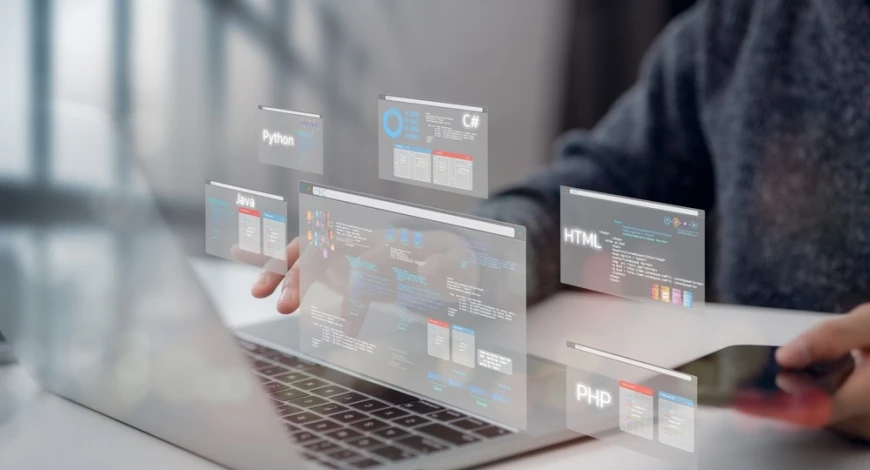What Are the Differences Between Web Design and Web Development?
In web projects, both web design and web development play crucial roles. Although often confused, these two fields differ significantly in scope, skill sets and workflows. Web design focuses on user experience, while web development centers on technical infrastructure, integrations and functionality. This article not only compares these disciplines but also examines modern software architectures, security standards, performance monitoring approaches and measurable success metrics from a professional perspective.
The Fundamental Distinction Between Design and Development
Web design is built on visual hierarchy, user experience (UX) and user interface (UI). Web development, on the other hand, relies on coding, integration, API management, data flows and security. If design visualizes an idea, development turns that idea into an operational product.
Core Differences
- Design is user-oriented; development is system-oriented.
- Design tools involve sketches, prototypes and UI kits; development relies on codebases and software architectures.
- Design deals with emotion and perception, whereas development emphasizes performance, security and sustainability.
Strategic Value: How Design and Development Contribute to Business
Both disciplines are strategically essential for digital success. While design shapes user interaction with the brand, development ensures that this interaction is fast, secure and seamless. In digital transformation efforts, alignment between design and development significantly impacts efficiency.
Impact of Strategic Layers
- Web design strengthens brand perception.
- Web development enables automation of operational workflows.
- Integrations bring processes like O2C, P2P and S&OP/MRP into the digital ecosystem.
- Alignment between both fields increases transformation performance.
Modern Web Architectures: The Technical Foundation of Design and Development
Although web design is aesthetic-focused, an excellent web experience must integrate seamlessly with technical architectures. This section covers API architectures, data pipelines and more.
API Architecture and the Frontend–Backend Divide
In development workflows, technologies like REST and GraphQL are essential. While designers create interface flows, developers connect these flows to APIs to ensure system interaction.
- REST: A resource-oriented communication model.
- GraphQL: Provides flexibility in data querying.
- API Gateway management: rate limiting, throttling and versioning.
iPaaS/ESB Integrations
In large-scale projects, integration layers ensure harmony between multiple systems.
- Workflow orchestration
- Logging and error handling
- Real-time data streaming
ETL/ELT Processes and Data Management
In e-commerce and SaaS platforms, user behavior data must be processed through ETL/ELT pipelines to derive actionable insights. Design decisions also increasingly rely on such data.
Event-Driven Architectures
Technologies like Kafka or Redis Stream are ideal for processing user interactions in real time. This architecture enhances frontend performance and strengthens user experience.
Security and Compliance: A Mandatory Layer in Development
Unlike design, development teams must consider system security and compliance. Methods such as MFA, RBAC/ABAC and data masking are essential.
PII Masking and Data Protection
Protecting user data (PII) is mandatory for both trust and legal compliance.
- Anonymization
- Tokenization
- Data lifecycle management
Security Requirements in Development
- ISO 27001-aligned software processes
- GDPR/local compliance for data protection
- OAuth 2.0-based authentication
- Penetration testing and code analysis
Performance and Observability: The Critical Side of Development
While design shapes the visual face of a web project, performance is determined entirely by development. Observability tools are essential for making performance measurable.
Core Performance Metrics
- TTFB (time to first byte)
- TTI (time to interactive)
- Rendering time
- API latency
- Uptime rate
Observability Tools
- Distributed tracing with OpenTelemetry
- Log analytics platforms
- Real User Monitoring (RUM)
- Metric-based alerting
Real-World Scenarios: Where Design and Development Diverge
The differences between web design and web development become clearer in practical implementations.
Scenario 1: Frontend–Backend Alignment in E-Commerce
While designers plan the user journey, backend developers create stock, order and payment APIs. This alignment can increase conversion rates by 20%.
Scenario 2: Real-Time Data Flow in a SaaS Product
Event-driven architectures enable dashboards to refresh instantly, significantly improving user experience.
Scenario 3: Security Layers in a Financial Application
RBAC/ABAC models enforce access control. Designers tailor interfaces for different user roles, while developers implement the underlying security logic.
KPI and ROI: Measuring the Impact of Design and Development
The success of a web project is evaluated not just by aesthetics or functionality but by measurable performance criteria.
Design-Related KPIs
- Bounce rate
- Average session duration
- User interaction density
- Heatmap behaviors
Development-Related KPIs
- API response times
- System uptime
- Error ratios
- Server cost efficiency
ROI Calculation
- Total project cost
- Increased user engagement
- Reduced maintenance costs
- Savings through workflow automation
Best Practices
A strong alignment between design and development is essential for professional web outcomes.
- Adopt an API-first development strategy
- Include technical teams in UI/UX prototyping
- Base design decisions on data
- Use event-driven infrastructures when appropriate
- Perform early-stage security and performance testing
Checklist
- Are design prototypes aligned with technical requirements?
- Are API structures well-documented?
- Is data security (PII masking) applied?
- Are performance metrics being monitored?
- Is frontend–backend integration seamless?
- Is there a data collection mechanism for KPI and ROI measurement?
In conclusion, web design and web development are distinct but complementary disciplines. Design shapes the user experience, while development ensures that this experience operates securely, quickly and sustainably. With modern architectures, security standards and performance analytics, the synergy between design and development determines long-term digital success.
-
 idesa creative
idesa creative
- 21 November 2025, 12:51:07
 English
English



